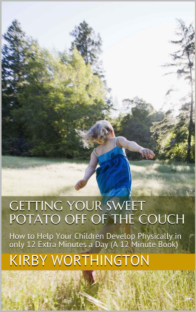Teach Your Child to Follow Directions the Fun and Easy Way
 Have you ever wondered how to teach your child to follow directions without it turning into a power struggle? The key is to focus on following directions as a skill that children can learn gradually in the same fun ways that they can learn their colors or to tie their shoes.
Have you ever wondered how to teach your child to follow directions without it turning into a power struggle? The key is to focus on following directions as a skill that children can learn gradually in the same fun ways that they can learn their colors or to tie their shoes.
Here's the Following Directions Game:
The best age to introduce this game is around one year, but you can introduce it any time, adjusting to their age and skill level. Keep in mind your child's attention span—keep the game short, and stop before the kids are tired of it.
Tell your child, "I have a game. It's called the Following Directions Game. I'll tell you something to do, and you see if you can do it."
Tell your child, "I have a game. It's called the Following Directions Game. I'll tell you something to do, and you see if you can do it."
Start off with one instruction. Demonstrate while saying, "Touch your nose."
When they do that, give them a second instruction, "Touch your head."
For two year olds, you can raise the bar to two instructions at a time. "Pat your belly and wave your hand."
For three year olds, eventually work up to three instructions. "Touch your head, then your elbow, then your knee."
The sillier you are about it, the more responsive your child is likely to be. If the instruction is "Stand on one foot," then wave your other foot around or pretend that you can't keep your balance. Make sound effects to go with touching different body parts. Ham it up and have fun laughing together.
You can also switch roles. Have your child give the directions and you do what she says. If your child seems reluctant to play, this could be a good place to start. Model following directions well, and make it fun.
For older children, try games like "Simon Says", "Mother May I," or "Red Light, Green Light." You can also try to trick them by saying one thing and demonstrating another. (Only do this with older children who have demonstrated the ability to follow directions.)
Following directions includes language comprehension, ability to focus and hold an idea in mind, and connection of thoughts with physical actions. It's a complex process, so be patient as your little one learns to put all these skills together! And most of all, have fun with it!
Photo Credit: Phillie Casablanca cc
Related Posts
By accepting you will be accessing a service provided by a third-party external to https://growthandgiggles.com/

